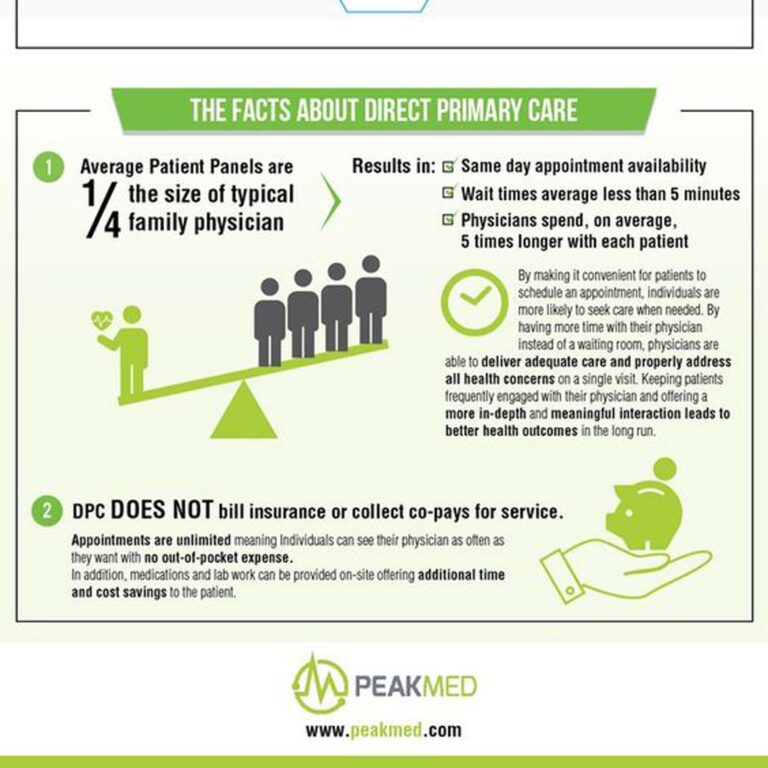Understanding Direct Primary Care: An Introduction
In a world where healthcare often feels impersonal and rushed, there’s a revolutionary model rising in popularity that aims to change all that: Direct Primary Care (DPC). DPC is not just another healthcare buzzword; it’s an approach that brings the doctor-patient relationship back to the forefront, ensuring you receive personalized, comprehensive care that’s tailored to your individual needs.
The Core of Direct Primary Care
At its essence, Direct Primary Care is a membership-based model where patients pay their healthcare providers directly through monthly, quarterly, or annual fees. This approach omits traditional insurance, which means no third-party intermediaries. As a result, both doctors and patients enjoy a plethora of benefits.

DPC vs. Traditional Healthcare: The Key Differences
- More Time with Your Doctor: In traditional models, doctors often see numerous patients each day, limiting each appointment to mere minutes. With DPC, doctors have a smaller patient roster, allowing for longer, more in-depth visits. This ensures thorough examinations, a comprehensive understanding of your health concerns, and more meaningful interactions.
- Transparent Pricing: Without insurance companies muddling the waters, DPC provides clarity in healthcare costs. There are no surprise bills, just a straightforward membership fee.
- Accessibility: The DPC model typically offers easier access to your doctor. This might mean same-day or next-day appointments, direct phone or email access, and even telemedicine options.
- Personalized Care: Fewer patients mean more time to know each one on a personal level. This fosters a deep understanding of individual health histories, preferences, and needs, leading to highly personalized care.
Why Consider Direct Primary Care?
Deepened Doctor-Patient Relationship: The foundation of DPC is the strengthened bond between doctor and patient. This relationship-centric model encourages trust, open communication, and a partnership approach to healthcare, ensuring that patients are active participants in their health journey.
Economic Sense: Many individuals find that the DPC model, even when combined with a high-deductible insurance plan for emergencies, can be more cost-effective than traditional insurance. With clear, upfront pricing, patients can often better manage and predict their healthcare expenses.
Holistic Health Focus: Rather than a symptom-based approach, many DPC providers emphasize overall well-being. This could mean a stronger focus on preventive care, nutrition, mental health, and other holistic health aspects.
Privacy and Autonomy: Without insurance companies in the mix, there’s an added layer of privacy in your healthcare. Moreover, decisions about treatments, tests, and more remain between you and your doctor without external pressures.
Who Can Benefit from Direct Primary Care?
While DPC can cater to a wide range of individuals, certain groups might find it especially appealing:
- Patients seeking more time and attention from their doctors.
- Those frustrated with the complexities and hidden costs associated with insurance-based healthcare.
- People looking for a holistic, preventative approach to health.
- Individuals in need of regular medical consultations, such as those with chronic conditions.
How to Transition to Direct Primary Care
If the DPC model feels right for you, the transition process can be straightforward:
- Research and Find DPC Providers: Start by searching for DPC providers in your area. Websites like the DPC Frontier Mapper can help.
- Consultation: Most DPC practices offer a preliminary consultation. This allows you to understand their approach, fees, services offered, and any other specifics.
- Membership Details: Understand the terms of the membership, including costs, duration, renewal processes, and any additional fees for specific services.
- Transitioning Medical Records: Once you decide on a DPC provider, you’ll need to transition your medical records. This usually requires a release form from your previous doctor.
- Stay Informed: As with all healthcare decisions, stay informed. Periodically assess whether the DPC model continues to meet your needs and adjust as necessary.

Wrapping Up
Direct Primary Care is redefining the landscape of primary healthcare by placing patients and doctors at the center of the narrative. It challenges the status quo, pushing for a healthcare environment where individuals are more than just numbers. If you yearn for more personalized care, transparent pricing, and a strengthened relationship with your doctor, DPC might be the fresh perspective you’ve been seeking in your healthcare journey.
